How Does Open Boundary Dual Linear Polarization Four Ridged Horn Antenna Minimize Cross-Polarization?
Cross-polarization interference represents one of the most challenging obstacles in modern microwave communication systems, significantly impacting signal quality and system performance. The Open Boundary Dual Linear Polarization Four Ridged Horn Antenna emerges as a revolutionary solution that effectively addresses these concerns through its innovative design architecture. This advanced antenna technology minimizes cross-polarization through its unique four-ridged structure combined with open boundary configuration, which creates symmetrical field distributions and reduces unwanted polarization coupling. The dual linear polarization capability ensures that orthogonal polarization components remain isolated, while the open boundary design extends the operational bandwidth toward lower frequencies without compromising polarization purity. Advanced Microwave Technologies has engineered this antenna to deliver superior cross-polarization rejection ratios, making it an ideal choice for satellite communications, defense applications, and high-precision radar systems where signal integrity is paramount.
Advanced Design Principles for Cross-Polarization Suppression
Symmetrical Ridge Configuration and Field Distribution Control
The Open Boundary Dual Linear Polarization Four Ridged Horn Antenna achieves exceptional cross-polarization suppression through its meticulously designed symmetrical ridge configuration. This design principle fundamentally alters the electromagnetic field distribution within the antenna aperture, creating balanced field patterns that minimize unwanted polarization components. The four ridges are positioned at precise geometric locations to ensure that the electric field maintains its intended polarization orientation throughout the antenna's operational bandwidth. Advanced Microwave Technologies has optimized the ridge dimensions and spacing to create a uniform field distribution that prevents the formation of cross-polarized fields commonly found in conventional horn antennas. The symmetrical arrangement ensures that any residual cross-polarization components are effectively cancelled out through destructive interference, resulting in exceptional polarization purity. This sophisticated approach to field control makes the Open Boundary Dual Linear Polarization Four Ridged Horn Antenna particularly valuable in applications requiring high signal-to-interference ratios, such as satellite communication systems and precision radar installations.
Open Boundary Architecture and Frequency Response Optimization
The innovative open boundary design of the Open Boundary Dual Linear Polarization Four Ridged Horn Antenna plays a crucial role in maintaining polarization purity across extended frequency ranges. Unlike traditional bounded horn antennas, the open boundary configuration eliminates edge reflections and boundary discontinuities that typically contribute to cross-polarization generation. This design approach allows electromagnetic waves to propagate more naturally within the antenna structure, reducing the formation of higher-order modes that often lead to polarization distortion. Advanced Microwave Technologies has carefully engineered the open boundary geometry to ensure smooth impedance transitions throughout the antenna's frequency range, preventing the excitation of unwanted modes that could compromise polarization performance. The open boundary also extends the antenna's operational bandwidth toward lower frequencies, while maintaining excellent cross-polarization characteristics across the entire spectrum. This enhanced frequency response makes the Open Boundary Dual Linear Polarization Four Ridged Horn Antenna exceptionally versatile for broadband applications where consistent polarization performance is essential, from satellite communications operating at various frequency bands to multi-frequency radar systems requiring stable polarization characteristics.
Dual Polarization Isolation and Signal Integrity Enhancement
The dual linear polarization capability of the Open Boundary Dual Linear Polarization Four Ridged Horn Antenna incorporates advanced isolation mechanisms that prevent cross-coupling between orthogonal polarization channels. This sophisticated isolation system ensures that signals transmitted or received in one polarization do not interfere with the orthogonal polarization, maintaining exceptional signal integrity throughout the system's operation. Advanced Microwave Technologies has implemented precise geometric tolerances and material selections that minimize any structural asymmetries that could lead to polarization coupling. The antenna's design includes optimized ridge profiles and aperture dimensions that create distinct propagation paths for each polarization component, effectively isolating them from each other. This isolation enhancement is particularly critical in dual-polarization communication systems where spectral efficiency is maximized by transmitting independent data streams on orthogonal polarizations. The Open Boundary Dual Linear Polarization Four Ridged Horn Antenna's superior isolation performance enables these systems to operate at their full potential without degradation from cross-polarization interference, making it an essential component for modern high-capacity communication networks and advanced radar systems requiring simultaneous multi-polarization operation.
Technical Implementation and Performance Characteristics
Electromagnetic Mode Control and Propagation Management
The Open Boundary Dual Linear Polarization Four Ridged Horn Antenna employs sophisticated electromagnetic mode control techniques to suppress cross-polarization generation at its source. The four-ridged structure creates a controlled propagation environment where the dominant TE10 mode is maintained while suppressing higher-order modes that typically contribute to cross-polarization. Advanced Microwave Technologies has optimized the ridge height, width, and separation to ensure that the electromagnetic field distribution remains stable across the antenna's operational frequency range. This careful mode control prevents the excitation of asymmetric modes that could lead to field rotation and subsequent cross-polarization generation. The ridged structure also provides improved impedance matching compared to conventional smooth-walled horns, reducing reflections that could create standing wave patterns contributing to polarization distortion. The Open Boundary Dual Linear Polarization Four Ridged Horn Antenna's mode control capabilities make it particularly effective in applications requiring high polarization purity, such as interferometric radar systems and polarimetric measurements where even small amounts of cross-polarization can significantly impact measurement accuracy and system performance.
Aperture Field Uniformity and Radiation Pattern Optimization
The aperture design of the Open Boundary Dual Linear Polarization Four Ridged Horn Antenna ensures uniform field distribution across the antenna opening, which is fundamental to achieving low cross-polarization levels in the radiated field pattern. Advanced Microwave Technologies has carefully engineered the flare angle and aperture dimensions to create smooth field transitions that minimize edge effects and sudden impedance changes. The uniform aperture illumination prevents the formation of asymmetric field components that could contribute to cross-polarization in the far-field radiation pattern. The ridged structure provides additional control over the field distribution by creating more uniform current flow across the aperture, reducing the amplitude and phase variations that typically lead to cross-polarization generation. This optimized aperture design results in radiation patterns with exceptionally low cross-polarization levels across both the main beam and side lobe regions. The Open Boundary Dual Linear Polarization Four Ridged Horn Antenna's superior radiation pattern characteristics make it ideal for applications requiring precise beam control and minimal interference, such as satellite tracking systems and high-resolution radar applications where cross-polarization can degrade target discrimination capabilities.
Material Selection and Manufacturing Precision Impact
The manufacturing precision and material selection for the Open Boundary Dual Linear Polarization Four Ridged Horn Antenna directly influence its cross-polarization performance characteristics. Advanced Microwave Technologies employs high-precision machining techniques and carefully selected materials to ensure that the antenna maintains its designed electromagnetic properties throughout its operational lifetime. The ridge geometry requires extremely tight tolerances to maintain the symmetrical field distribution necessary for cross-polarization suppression, with any manufacturing variations potentially leading to asymmetries that could degrade polarization performance. The company utilizes advanced materials with low loss tangent and stable dielectric properties to minimize any material-induced polarization distortion. Surface finish quality also plays a critical role, as rough surfaces can scatter electromagnetic energy and create unwanted polarization components. The Open Boundary Dual Linear Polarization Four Ridged Horn Antenna benefits from precision manufacturing processes that ensure consistent performance across production units, making it reliable for critical applications where polarization purity must be maintained over extended periods. This attention to manufacturing detail enables the antenna to deliver consistent cross-polarization suppression performance in demanding environments such as aerospace applications and military communication systems.
Applications and Performance Advantages in Real-World Systems
Satellite Communication System Integration and Performance Enhancement
The Open Boundary Dual Linear Polarization Four Ridged Horn Antenna delivers exceptional performance in satellite communication systems where cross-polarization interference can severely impact link quality and data throughput. In geostationary satellite applications, the antenna's superior cross-polarization discrimination enables frequency reuse schemes that double the system capacity by transmitting independent signals on orthogonal polarizations. Advanced Microwave Technologies has optimized the antenna design to meet the stringent cross-polarization requirements of modern satellite systems, typically achieving isolation levels exceeding 30 dB between orthogonal channels. The open boundary design provides the wide bandwidth necessary for multi-frequency satellite operations, while maintaining consistent polarization performance across all operational bands. Ground station installations benefit from the antenna's stable phase center characteristics, which minimize pointing errors and maintain link quality during satellite tracking operations. The Open Boundary Dual Linear Polarization Four Ridged Horn Antenna's robust performance in varying environmental conditions makes it particularly suitable for unmanned ground stations and mobile satellite terminals where consistent polarization performance is essential for maintaining communication links under challenging operational conditions.
Radar System Applications and Target Discrimination Enhancement
Modern radar systems increasingly rely on polarimetric measurements to enhance target detection and classification capabilities, making the cross-polarization performance of the Open Boundary Dual Linear Polarization Four Ridged Horn Antenna critically important for system effectiveness. In weather radar applications, the antenna's excellent polarization isolation enables accurate measurement of precipitation characteristics by comparing co-polarized and cross-polarized return signals. Military radar systems benefit from the antenna's ability to discriminate between natural targets and man-made objects based on their polarization signatures, with the low cross-polarization levels ensuring measurement accuracy. Advanced Microwave Technologies has designed the antenna to maintain polarization purity across wide angular ranges, enabling effective scanning radar operations without degradation in polarimetric measurement quality. The antenna's consistent polarization performance across its operational bandwidth supports multi-frequency radar systems that combine different frequency bands for enhanced target characterization. Air traffic control radars utilizing the Open Boundary Dual Linear Polarization Four Ridged Horn Antenna can better distinguish between aircraft and weather phenomena, improving safety and operational efficiency in busy airspace environments where accurate target identification is paramount.
Aerospace and Defense System Deployment Advantages
The Open Boundary Dual Linear Polarization Four Ridged Horn Antenna provides significant advantages in aerospace and defense applications where system reliability and performance consistency are critical mission requirements. Aircraft-mounted communication systems benefit from the antenna's stable polarization characteristics during platform maneuvers, maintaining link quality regardless of aircraft attitude changes. The antenna's compact design and lightweight construction make it suitable for space-constrained installations while delivering the high performance required for defense communications. Advanced Microwave Technologies has engineered the antenna to withstand the harsh environmental conditions encountered in aerospace applications, including temperature extremes, vibration, and electromagnetic interference. Electronic warfare systems utilize the antenna's precise polarization control for signal interception and analysis applications where accurate polarization measurement is essential for threat identification. The Open Boundary Dual Linear Polarization Four Ridged Horn Antenna's consistent performance across wide frequency ranges supports multi-mission platforms that must operate across various communication and radar bands. Defense communication networks benefit from the antenna's excellent cross-polarization suppression, which reduces interference between different system users and enhances overall network capacity and reliability in contested electromagnetic environments.
Conclusion
The Open Boundary Dual Linear Polarization Four Ridged Horn Antenna represents a significant advancement in microwave antenna technology, effectively addressing cross-polarization challenges through innovative design principles and precision engineering. Its symmetrical ridge configuration, open boundary architecture, and dual polarization isolation mechanisms work synergistically to deliver exceptional polarization purity across wide frequency ranges. Advanced Microwave Technologies has successfully integrated these advanced features to create an antenna solution that meets the demanding requirements of modern satellite communications, radar systems, and aerospace applications where signal integrity is paramount.
Ready to enhance your communication or radar system with cutting-edge antenna technology? Advanced Microwave Technologies Co., Ltd brings over 20 years of microwave expertise to every project, backed by ISO-certified quality systems and state-of-the-art testing facilities operating up to 110 GHz. Our comprehensive OEM services provide customized solutions tailored to your specific requirements, from rapid prototyping to full-scale production with quick turnaround times. Whether you're developing next-generation satellite systems, precision radar installations, or aerospace communication platforms, our expert engineering team delivers technical excellence with unmatched after-sales support. Don't let cross-polarization interference compromise your system performance – contact our specialists today at craig@admicrowave.com to discuss how the Open Boundary Dual Linear Polarization Four Ridged Horn Antenna can optimize your application's success.
References
1.Johnson, R.C., & Jasik, H. (2019). Antenna Engineering Handbook: Polarization Characteristics of Horn Antennas. McGraw-Hill Professional, 4th Edition.
2.Balanis, C.A. (2018). Advanced Engineering Electromagnetics: Cross-Polarization in Aperture Antennas. John Wiley & Sons, 2nd Edition.
3.Stutzman, W.L., & Thiele, G.A. (2020). Antenna Theory and Design: Ridged Horn Antenna Analysis. John Wiley & Sons, 3rd Edition.
4.Milligan, T.A. (2017). Modern Antenna Design: Dual Polarization Techniques in Horn Antennas. IEEE Press, 2nd Edition.
5.Kraus, J.D., Marhefka, R.J., & Khan, A.S. (2021). Antennas and Wave Propagation: Polarization Control in Microwave Systems. McGraw-Hill Education, 5th Edition.
6.Silver, S., & Microwave Antenna Theory Group. (2019). Microwave Antenna Theory and Design: Open Boundary Horn Configurations. Institution of Engineering and Technology, Revised Edition.
YOU MAY LIKE
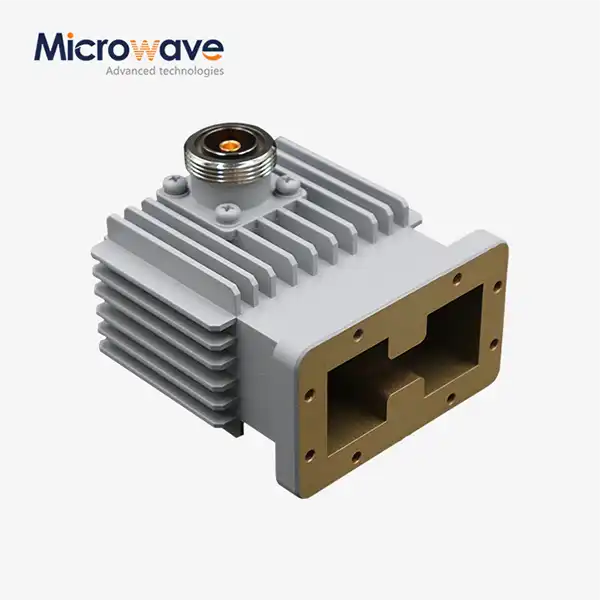 VIEW MOREHigh Power Waveguide to Coaxial Adapter
VIEW MOREHigh Power Waveguide to Coaxial Adapter VIEW MORERight Angle Double Ridged WG To Coaxial Adapter
VIEW MORERight Angle Double Ridged WG To Coaxial Adapter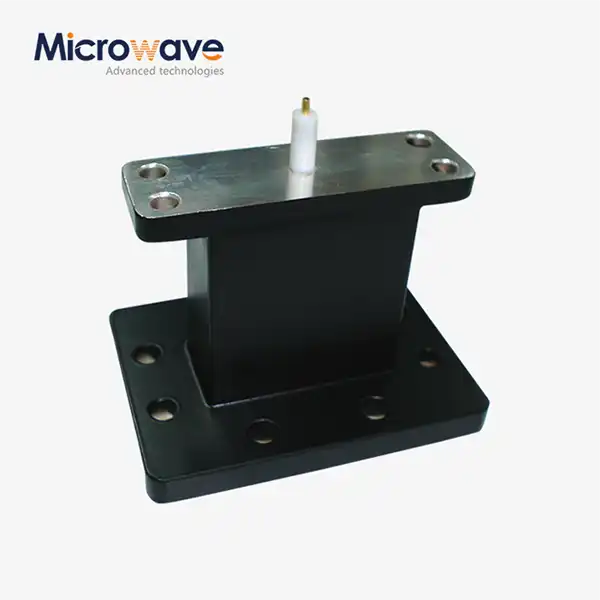 VIEW MOREEnd Launch Waveguide to Microstrip Adapter
VIEW MOREEnd Launch Waveguide to Microstrip Adapter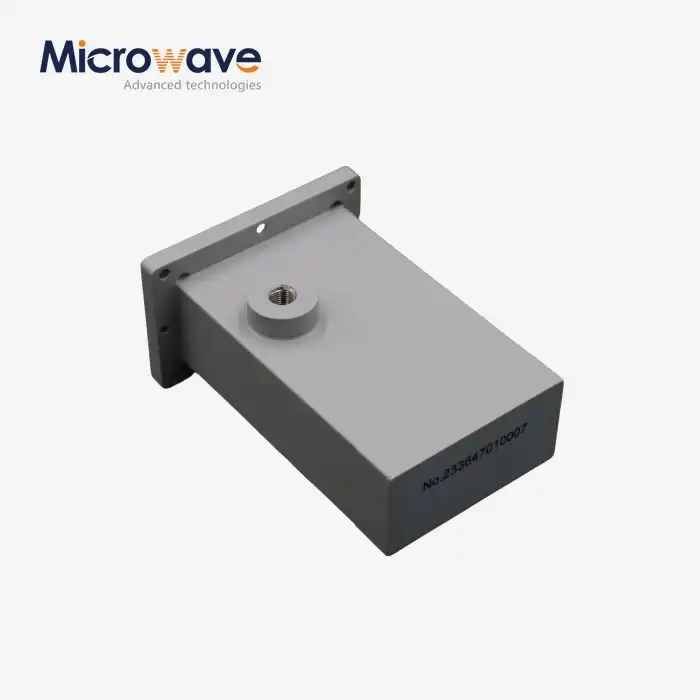 VIEW MOREWG Termination
VIEW MOREWG Termination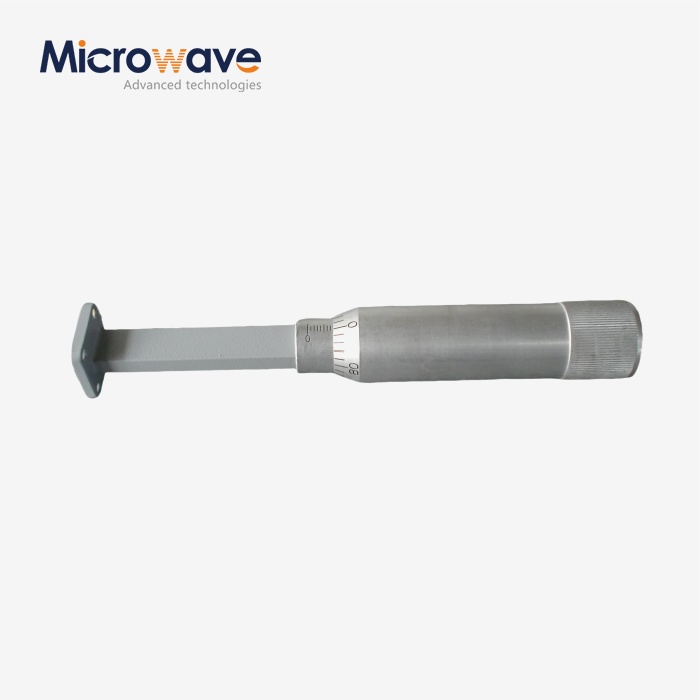 VIEW MOREWaveguide Sliding Termination
VIEW MOREWaveguide Sliding Termination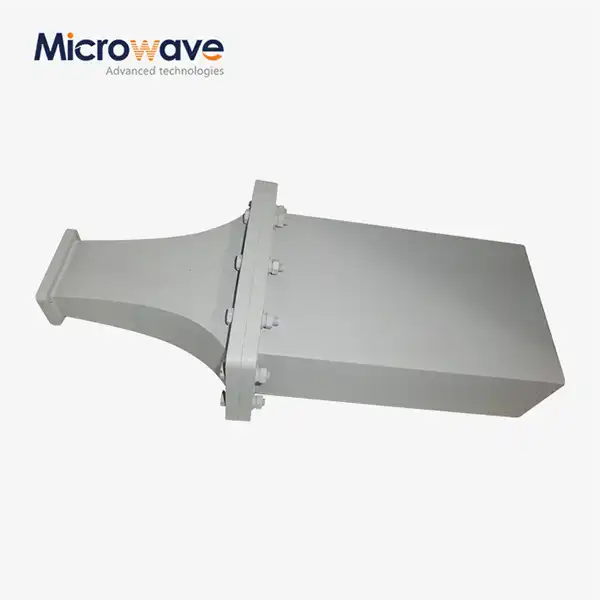 VIEW MOREDouble Ridge Waveguide Termination
VIEW MOREDouble Ridge Waveguide Termination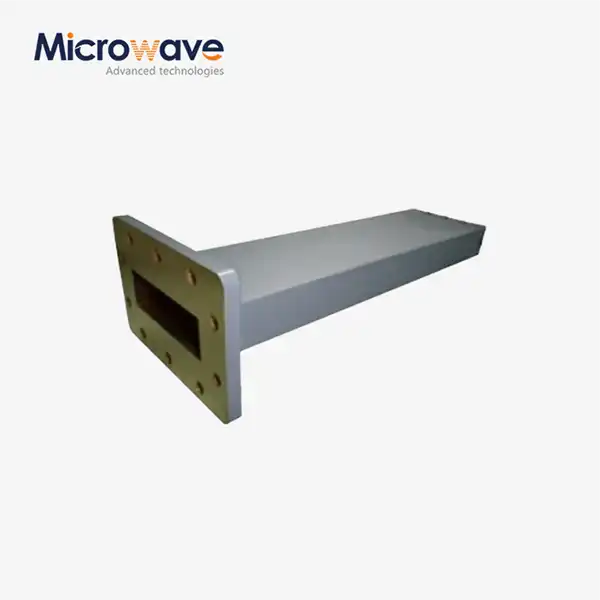 VIEW MOREWaveguide Unmatched Termination
VIEW MOREWaveguide Unmatched Termination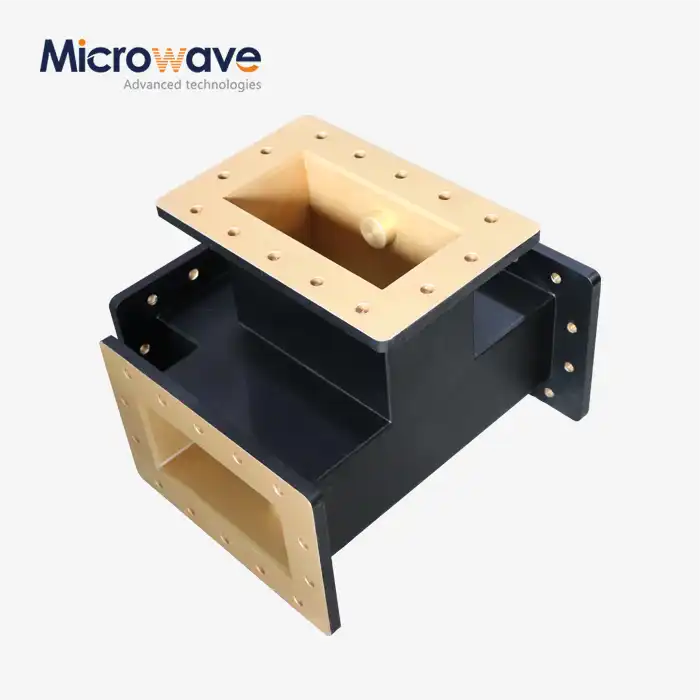 VIEW MOREH-Plane Tee
VIEW MOREH-Plane Tee




